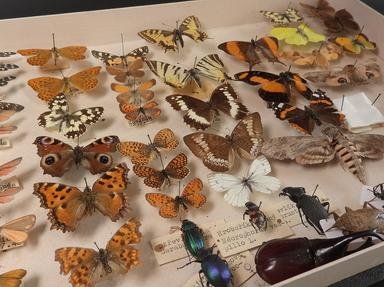Quiz Answer Key and Fun Facts
1. Dragonflies and damselflies belong to the order Odonata. What does the name Odonata mean?
2. Both damselflies and dragonflies live through an aquatic larval stage. What is the most obvious difference between a damselfly and a dragonfly larva?
3. Dragon and damselflies undergo metamorphosis like many other insects. Unlike the vast number of their cousins, their larvae undergo a process known as hemimetabolism. This means that they do not go through a pupal stage.
4. What name is given to the empty larval husk after emergence of the adult?
5. Damselflies belong to a sub order known as the Zygoptera. What does this term mean?
6. Female damsel and dragonflies have evolved a range of grooves and indentations in the thorax. The purpose of these features is to enable the wings to move more easily.
7. Dragonflies have very acute eyesight, possessing two huge compound eyes. They also possess a further three light sensitive simple eyes at the top of the head. These simple eyes are known by what name?
8. Although not dangerous, both dragon and damselflies will sting and bite if provoked.
9. As an order, dragonflies and damselflies are highly sensitive to their environment. Should conditions be unfavourable to their further development, the nymph will enter a period known as which of the following options?
10. Of the 5,900 species of dragonfly and damselfly known, some forty five species are resident and breed in the British Isles. Which aureate insect is the largest of these?
Source: Author
SisterSeagull
This quiz was reviewed by FunTrivia editor
rossian before going online.
Any errors found in FunTrivia content are routinely corrected through our feedback system.

